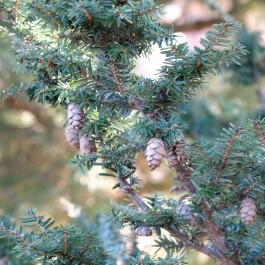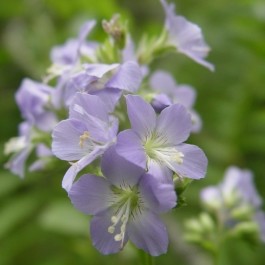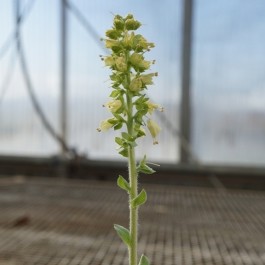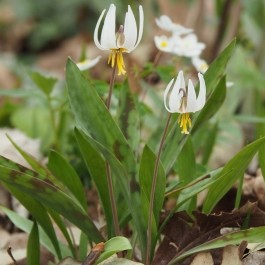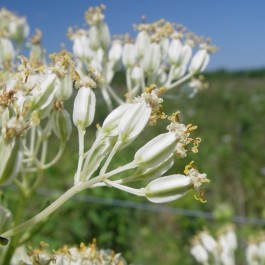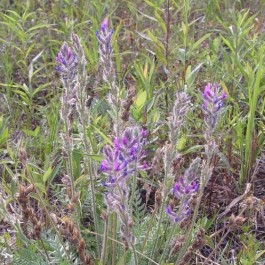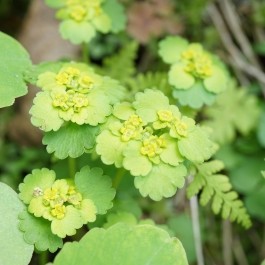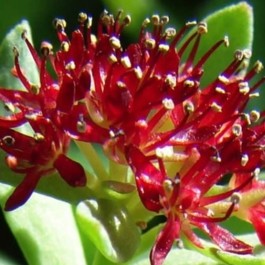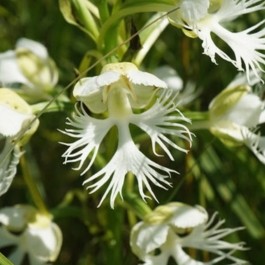Rare & Endangered Species

With nearly 1,200 acres of land, the Arboretum is dedicated to conserving and protecting native plants and encouraging a deeper public understanding of the value, beauty and critical nature of plants in our world. As a partner with the Center for Plant Conservation (CPC), the Arboretum is responsible for leading conservation efforts for various species.
Tsuga canadensis, commonly known as eastern or Canada hemlock, is an evergreen tree with flat needles and very small cones, which ripen throughout the fall and slowly drop seeds over the winter. Eastern hemlock has a native range spreading from the northeastern United States to southeastern Canada. This species does not tolerate extremely warm temperatures, keeping it from spreading further south. Though common in the nursery trade, it is rarely seen in the wild in Minnesota and is classified as endangered in the state. In the United States, Minnesota is at the edge of eastern hemlock’s western range, which is one of the reasons it is so rare here.
In partnership with the University of Minnesota and MN-DNR, we are seedbanking, propagating, and curating live collections of this endangered tree. We are working with the DNR to augment one of the only remaining and by far the largest, native stands of this tree in the state. We also have several seedlings from a population of trees that disappeared in the 1970s and have been growing them to recreate that population as well as analyze other trees in collections that may be from that population that could produce a wider genetic diversity of seedlings to bolster that reestablished population.
Location: Visit the Dwarf Conifer Collection to observe several different cultivars of eastern hemlock. Visitors can also find more natural forms (non-cultivar specimens) in the Woodland Garden and along some of the natural trails.
Great Lakes Jacob’s ladder (previously known as Western Jacob's ladder) is found only in Minnesota and Wisconsin with six known populations. Three populations have been banked at the Arboretum. In Wisconsin, no individuals have been found after intensive searches in recent years at one site, and no seeds have been found at the second site.
With the recent elevation of this species from subspecies status, we are hoping to push for a federal listing of this species to increase federal protections and to bring increased focus on conservation for this high-priority species.
Location: Visitors can find this species along the Bog Boardwalk.
Kittentails are found in the Upper-Midwest and Great Lakes region. At the Arboretum, more than five populations have been banked and additional populations will be sampled in the coming years to capture the species’ genetic diversity across its range.
Location: Visitors can find this species in the Bennett-Johnson Prairie.
The Minnesota dwarf trout lily is a small, spring ephemeral found only in Minnesota. It is state and federally endangered and is restricted to just three counties. This plant is unique in that it is unable to produce viable seeds and exclusively reproduces vegetatively.
The first dwarf trout lily colonies were transplanted into the Arboretum in 1960, before being listed as endangered. Today, the Arboretum is home to about 21 colonies, most of which are doing very well and in some cases better than their original populations. Typically each plant's flower will only be active for a couple of days and the whole plant is above ground for just a few weeks.
Location: Visitors can find this species in the Wildflower and Woodland Azalea Gardens.
Tuberous Indian plantain is a native perennial that can reach 2-5 feet tall. This plant has been listed as state-threatened by the Minnesota Department of Natural Resources (DNR) since 1984. Population decline has been observed due to the development and destruction of suitable habitats.
Summary from the DNR’s Winter Nature Notes: On September 9, 2018, the Minnesota DNR, working with the Plant Conservation Program, transplanted 147 tuberous Indian plantain to Kasota Prairie Scientific and Natural Area and 76 plants to Minneopa State Park with the help of volunteers and the Minnesota Conservation Corps. Plants were moved in an effort to salvage a large population of these plants displaced by expanding development. Transplanting of native vegetation is attempted infrequently due to the complex interactions between plants and their local environments. This salvage project serves partly as an experiment to better understand how to transplant this rare species between locations. These newly established plants will continue to be monitored over the coming years. Access the full story
Location: Plants from this population can be found in the Bennett-Johnson Prairie, which remains as a backup of that original rescued population.
Fassett's Locoweed
Oxytropis campestris var. chartacea
Fassett’s locoweed is found in only three counties in Wisconsin and is state and federally endangered. The habitat type for this plant is restricted to sandy lake edges in lakes that fluctuate in water levels. So far at the Arboretum, seed from one population of Fassett’s locoweed has been successfully banked.
Iowa golden saxifrage is a Minnesota state endangered plant that has a restrictive habitat type of talus slopes. The conservation program began seed banking efforts with this species in 2019.
Leedy’s roseroot is a state-endangered and federally threatened plant. This plant used to have a larger geographic distribution but is now restricted to just six populations in Minnesota and New York and one recently discovered population in the South Dakota Black Hills. This plant has proven difficult to bank due to its limited, disjunct populations and restriction to sheer cliff-face habitats. Fortunately, the Conservation Program has been able to bank seed from both Minnesota and New York.
The Western prairie fringed orchid is a state-endangered and federally threatened native orchid. Its habitat has become severely fragmented throughout Minnesota. Orchid species are difficult to bank, but two populations have been banked so far at the Arboretum.
